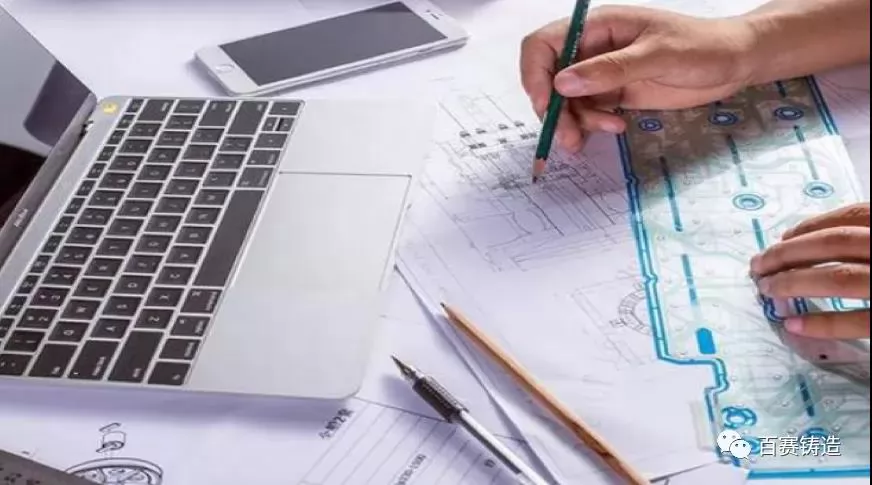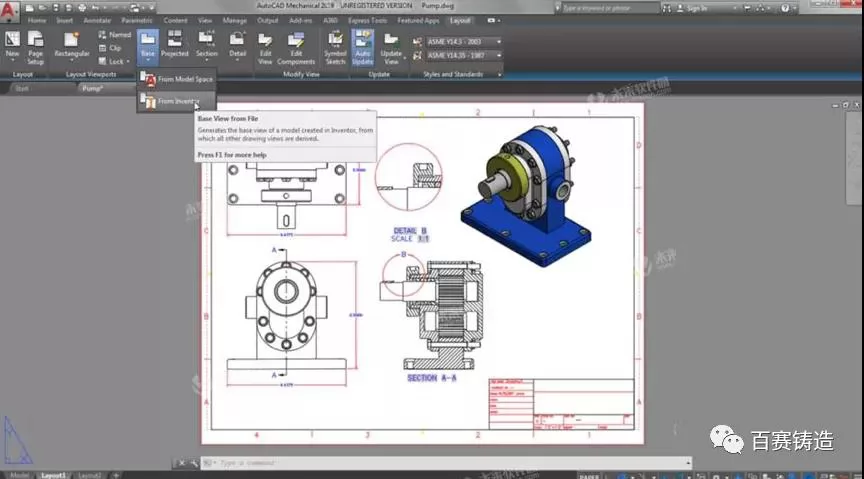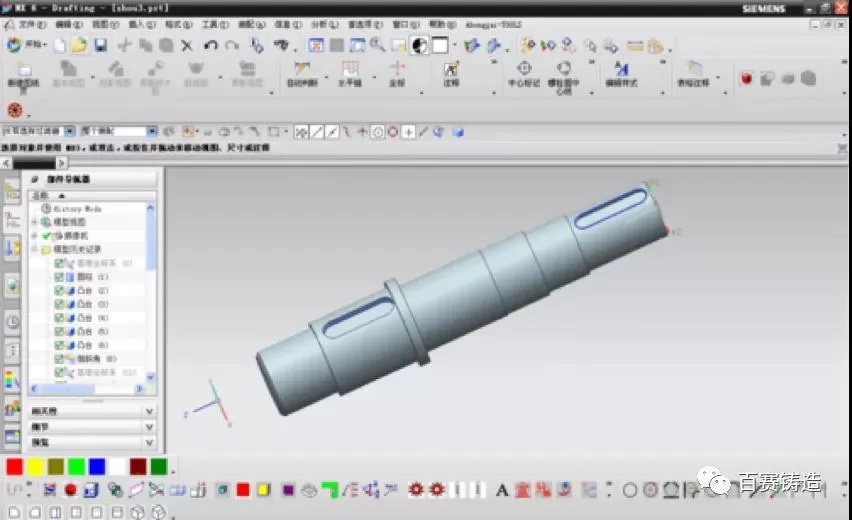Most of our customers have customization demand for castings. Therefore, according to customer drawings, Besser Casting will customize products and form batch orders. In order for the foundry to understand the drawings clearly and concisely, how should buyers design and provide drawings? What should be included in the drawings of precision castings?

The first step in designing precision casting drawings is to install drawing software on the computer. There are two categories of software, two-dimensional and three-dimensional software.
AutoCAD is a well-deserved industry leader in two-dimensional software, but AutoCAD is a graphics platform. Although it enables mechanical two-dimensional drawings, it is not efficient. Therefore, there are many secondary software developed based on this platform at home and abroad. Some of them are relatively good for mechanical drawings, such as Nuo Machinery, Design Star, Inkeyu, and Tianyu.

There is also three-dimensional software, which serves well as mechanical design software. The three-dimensional model can also be directly converted into two-dimensional engineering drawings. Among them, SolidWorks, Pro/ENGINEER, UG, SolidEdge, etc. are outstanding and worth using.

There is no doubt that some hand-drawn drawings still exist, but they are not very standard. Therefore, proficient use of one or two of the above software is a very important and necessary skill.
The drawing number is just like a person’s ID number. It is single and only belongs to this drawing. The meaning it represents is not just as simple as a string of numbers, it may contain the date of drawing, the number of the chart, and so on. Of course, the meaning of the drawing numbers compiled by each buyer is different. The biggest significance of the drawing number for our suppliers is that when the supplier places a large order for us, we can find out exactly which product the customer needs in the first time.
Marking the tolerances of major dimensions is the most important step in drawing design. You don’t need to mark all the tolerances, just mark the key fit dimensional tolerances, and we can judge which dimensions need to be machined based on these dimensions, which dimensions can be achieved by rough casting, and whether the product is suitable for precision casting, so as to give customers better suggestions. Usually, Besser Casting adopts the casting tolerance of the silica sol process, which is implemented in accordance with the standard ISO8062 CT6.

Unmarked dimensional tolerances can be specified in the lower left or lower right table of the drawing. The purchaser can give a reasonable tolerance range according to the actual use of the product. Our engineers will give a reasonable quotation based on the dimensional tolerances. Of course, the higher the dimensional precision requirements, the greater the difficulty for casting and post-machining. In order to avoid unreasonable cost, it is very necessary to provide reasonable dimensional tolerances.
Based on the application of precision casting products and properties of materials, we need to select suitable materials. After receiving the drawing, the quotation engineer will first confirm whether we can provide the material of the casting. The common materials that we can provide include stainless steel 304, 316, stainless iron 410, 420, 1Cr13, carbon steel 45#, Q235, Q345, low carbon alloy steel 40Cr, 42CrMo, 16MnCr5, etc., and some nickel-based alloy materials. Due to the differences in materials, the shrinkage ratio between each material is also different. We will determine the shrinkage ratio at the mold opening stage to ensure that the later casting size can meet the buyer's requirements. Some purchasers will also mark the complete chemical composition requirements in the drawing requirements, which can provide our manufacturers with more precise help whether it is quotation or development.
Marking the weight on the drawing helps the quotation engineer to calculate the later casting cost and can make the quotation more accurate. In the early telephone communication, the most frequently asked questions by our salespersons are the weight, material and size of the product. Because this often best reflects whether we can produce this casting, so as to give a preliminary judgment.
The description of the technical requirements of the drawings can enable engineers to understand the difficulty of casting in the early stage and play a key role in the confirmation of the later casting process. The technical requirements include the confirmation of the casting surface, the confirmation of the heat treatment requirements, the confirmation of the process requirements, the confirmation of the roughness, and the confirmation of the requirements for the grinding of the gate surface, and so on. Suppliers should make clear technical requirements, so that engineers can have a good understanding of the product in the early communication stage of the sample.
We have encountered such a situation where the drawings provided by the purchaser did not clearly indicate that the surface of the casting needed to be cast. After the products were developed and poured, the purchaser responded to us that there was no cast on the surface of the casting, which caused unnecessary losses for both of us. Therefore, making clear technical requirements means not only being responsible for yourselves, but also for suppliers.

We hope that the main requirements of the precision casting drawings mentioned above might bring you a little help. If you want to know more about castings, please contact us.



